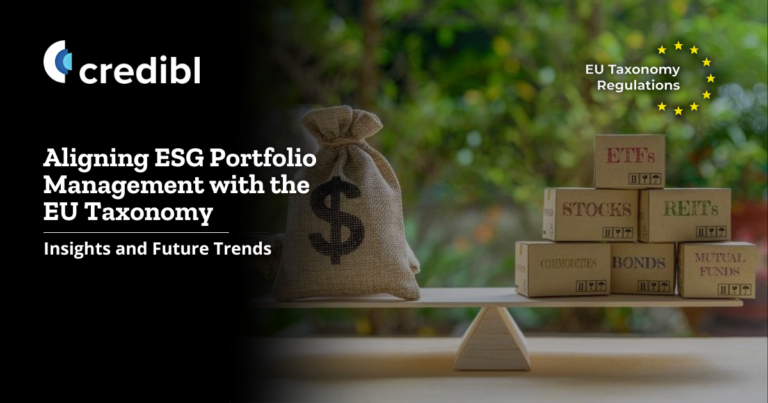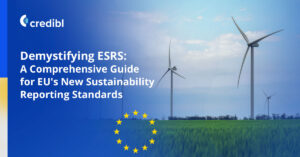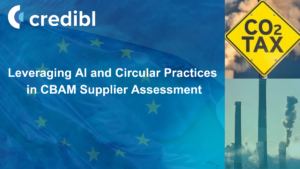Introduction
The alignment of ESG Portfolio Management with the EU Taxonomy has become a focal point for investment managers striving to comply with evolving regulatory frameworks and meet the increasing demand for sustainable investment options. The EU Taxonomy Regulation (2021) has set the stage, outlining the criteria for environmentally sustainable economic activities. This nexus between regulatory compliance and sustainable finance is crucial for ushering in a new era of responsible investment.
EU Taxonomy: An Overview
The EU Taxonomy plays a pivotal role in sustainable finance, acting as a catalyst for transparency and consistency in ESG reporting. It defines what constitutes an environmentally sustainable economic activity, thereby setting a clear benchmark for assessing the sustainability of investments. The alignment with EU Taxonomy is not only regulatory compliance but also a step towards achieving transparency and making informed investment decisions.
The Path to Alignment: Challenges and Strategies
Aligning portfolios with the EU Taxonomy presents a set of challenges, chiefly revolving around data availability, assessment methodologies, and the dynamic nature of regulatory frameworks. Investment managers need to navigate through these challenges to ensure compliance and to meet the sustainability preferences of their clients.
The strategies to overcome these hurdles include engaging in robust sustainability reporting, leveraging technology to enhance data collection and analysis, and adopting a proactive approach to understanding, and implementing the requirements of the EU Taxonomy.
Trends Analysis: Diverse Approaches to Alignment
Exploring real-world trends provides a multifaceted perspective on the journey towards EU Taxonomy alignment. Let’s explore some noteworthy case studies as provided by the United Nations Principles for Responsible Investment (UNPRI):
- Aberdeen Standard Investments tackled alignment by enhancing their ESG data collection and analysis capabilities, thus ensuring a more accurate assessment of their portfolio’s alignment with the EU Taxonomy criteria.
- Amundi embarked on a comprehensive review of their investment strategies to ascertain alignment, coupled with engaging their investee companies on sustainability matters.
- AXA Investment Managers adopted a proactive approach by engaging external experts to ensure a robust alignment assessment and employed a strategy of active engagement with investee companies on sustainability issues.
- BlackRock leveraged technology to enhance its sustainability data analysis capabilities, which played a pivotal role in its alignment journey.
- Credit Suisse took a holistic approach by integrating EU Taxonomy alignment considerations across their investment processes, thus ensuring a systematic approach towards alignment.
These trends epitomize the diverse strategies employed by investment managers to align their portfolios with the EU Taxonomy, each carving a unique path yet converging towards the same goal of achieving sustainable investment management.
Sector-Specific Insights
The EU Taxonomy alignment’s impact varies across different sectors. For instance, sectors like utilities and communication services show higher taxonomy alignment, contrasting with sectors like healthcare which have close to zero alignment. These disparities necessitate strategic portfolio adjustments to improve overall alignment. By accepting small deviations from benchmarks and controlling carbon emissions, asset managers can significantly enhance the taxonomy alignment of sustainable funds.
Recent Happenings
The year 2023 has seen several developments in the realm of ESG Portfolio Management, particularly regarding EU Taxonomy alignment. Here are a few notable examples:
- Expanded Scope of Activities: The EU published new delegated acts on June 13, 2023, expanding the scope of activities covered under the EU Taxonomy after a four-week consultation period that began in April 2023.
- Improved Reporting Practices: In its second year of mandatory EU Taxonomy reporting, EY’s EU Taxonomy Barometer showcased enhanced reporting practices across European countries and sectors, providing a comprehensive outlook of the progress made in mandatory taxonomy disclosure during 2023.
- Mandatory Reporting Updates: The Taxonomy Regulation mandated that all funds under Article 8 of SFDR, which promote environmental characteristics, must disclose the extent of their investments’ environmental sustainability under the Taxonomy Regulation and report on the proportion of their environmentally sustainable activities.
Financial Performance Impact
A case study by SEB Investment Management demonstrates the financial implications of aligning with the EU Taxonomy. Their global equity fund with assets under management of USD 985 million initially had a taxonomy alignment of 9.1%. By adjusting active sector and country allocation alongside limiting carbon emissions, they could potentially increase this alignment to 40% or even 50%. This alignment not only navigates the fund towards environmental sustainability but also may provide future returns by steering capital towards sustainable activities.
Future Trends
The regulatory landscape underpinning ESG Portfolio Management is evolving. The 2023 Sustainable Finance Package by the European Commission, expanding the EU Taxonomy and proposing new regulations on ESG rating providers, highlights this evolution. This expansion will likely compel Financial Services firms to realign their strategies to ensure compliance and to optimize the benefits of ESG integration into their investment processes.
Conclusion
Aligning with the EU Taxonomy is becoming imperative for ESG Portfolio Management, fostering a structured approach towards environmental sustainability within finance. These examples illustrate such alignment’s practicality and financial benefits, offering a pathway for asset managers to enhance their ESG portfolios’ performance and compliance. Staying abreast of these changes and adapting investment strategies accordingly will be crucial for success in the burgeoning ESG investment landscape as regulations evolve.







